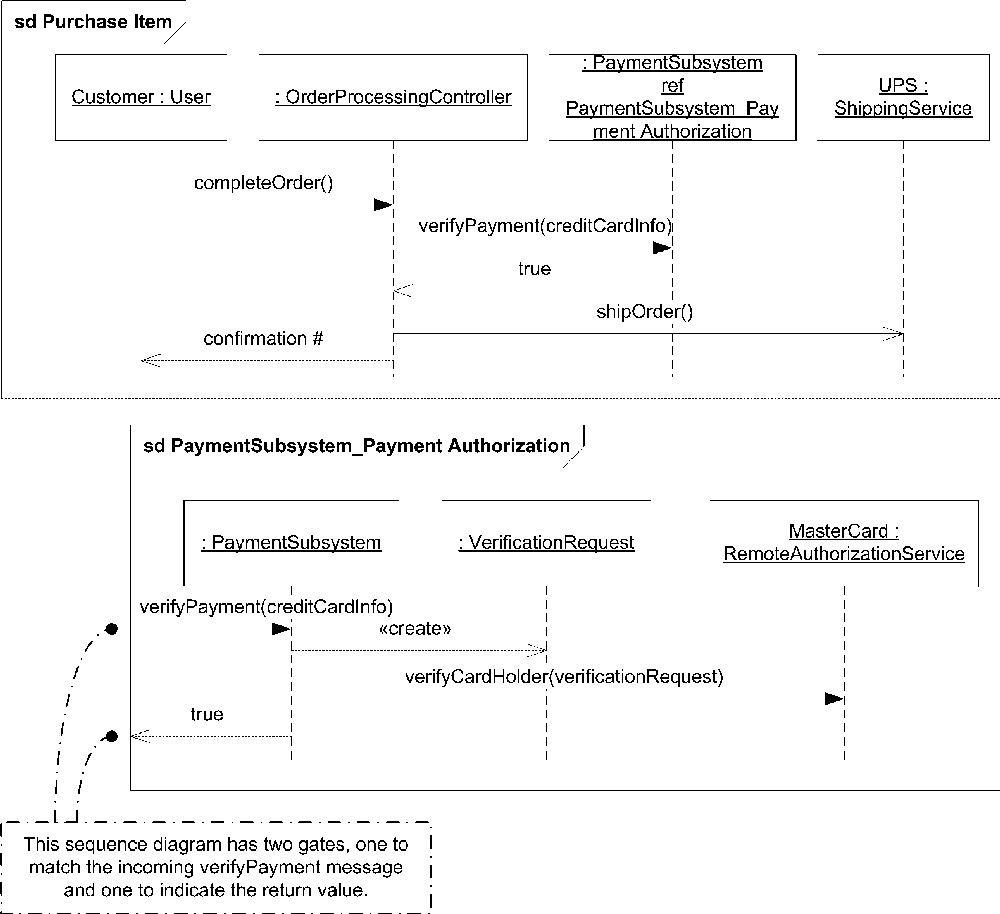Decomposition
A participant in an interaction diagram may be a complex element in and of itself. UML allows you to link interaction diagrams by creating a part decomposition
reference from a participant to a separate diagram. For example, you may have a Purchase Item interaction diagram that has a participant execute a credit card authorization. The actual details of the authorization process are probably not of interest to the readers of your Purchase Item diagram; however, they are vitally important to the developers responsible for the authorization subsystem. To help reduce clutter on your diagrams, you can create a separate diagram showing how the authorization subsystem validates credit cards and place a decomposition reference to that on the Purchase Item diagram.
To create a part decomposition reference, simply place ref interaction_diagram_name
after the instance name in the head of your lifeline. Figure 10-31 shows how the Purchase Item and authorization diagrams can be modeled.

Figure 10-31. Example of a decomposition diagram
Messages that come into or out of the decomposed lifeline are treated as gates that must be matched by corresponding gates on the decomposition. A gate represents a point where a message crosses the boundary between the immediate interaction fragment and the outside environment. A gate has no symbol of its own; you simply show a ...
Get UML 2.0 in a Nutshell now with the O’Reilly learning platform.
O’Reilly members experience books, live events, courses curated by job role, and more from O’Reilly and nearly 200 top publishers.

